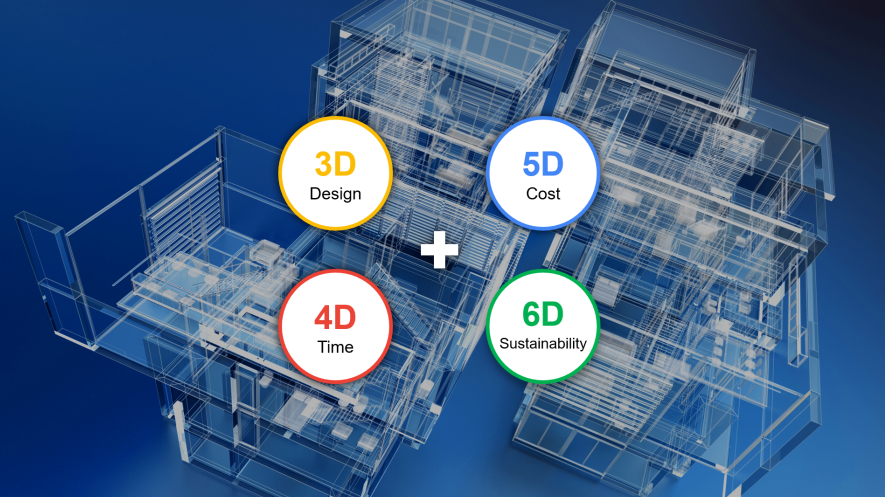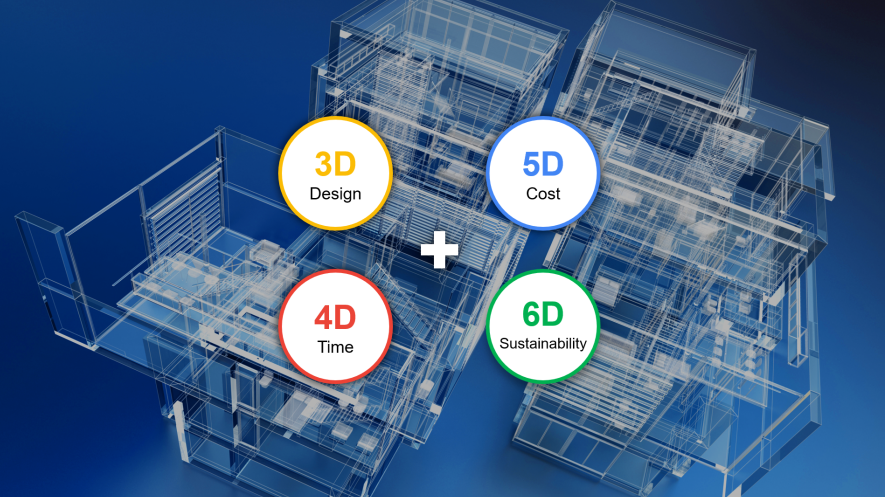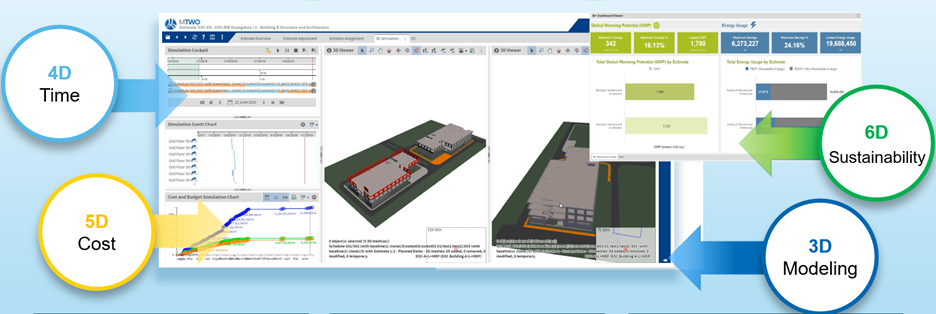Technical Area | Articles
The place to solve all your BIM doubts
From 3D to 6D, BIM Dimensions Explained
BIM Dimensions Explained
BIM Implementation Strategies

Though the construction and engineering industry is infused with high-tech, when we discuss digital transformation, we are primarily referring to the implementation of BIM – Building Information Modeling – one of the most promising developments in the AEC (architecture, engineering, and construction) industry. With BIM, the boundaries between the physical and virtual sphere are merging and the way we plan, design, construct, and operate building projects is changing.
What is BIM?
The concept of BIM has existed since the 1970’s. In the late 1970’s and 1980’s, the first software tools were developed for modeling buildings.
In the BIM Handbook, BIM was defined as “a modeling technology and associated process to produce, communicate, and analyze building models”.
What is 5D BIM?
- 3D model: A classic 3D geometric model enriched with extra data (quantities, furnishings, materials, devices, personnel deployment).
- 4D: The time factor. The 4D model integrates work stages and their duration so that a model-based schedule and process plan can be created.
- 5D: Cost integration. Cost assignment in the 5D model allows integral, model-based cost planning, tendering, and execution.
5D BIM = 3D model + 4D time + 5D cost
When the 3D design of a building project is integrated with “time factor” (4D) and “cost factor” (5D), it’s much easier for project stakeholders to understand what’s being built, how, when, by whom, with what, the cost, and provide quick feedback.
How does 5D BIM support project delivery process?
As a key step in the planning phase, 5D simulation creates a lifelike building process for all stakeholders involved in the planning, execution, and operation phase, enabling them to explore multiple alternatives and prompt comparisons, test complex scenarios, and predict the consequences in cost and schedules. This helps builders make the most informed decisions.
What is 6D BIM?

With 6D simulations, the 3D design model is integrated with the schedule (4D), cost (5D), and the carbon factor (6D), allowing stakeholders to compare different design options side by side, optimize the project from every angle, balance cost, schedule and now, the impact of embodied carbon.
Why do you need 6D BIM?
(1) Gain higher efficiency by
- working in a model-based way with your teams and partners.
- creating added value in compliance with costs and quality for your client.
- optimizing conventional planning for further execution.
- integrating data sources.
(2) Become more sustainability-friendly because
- you can reduce wastage and resources by optimizing planning with 6D.
- you can select green materials with intelligent Business Partner Management and enhanced procurement processes.
- by optimizing your supply chain, you can reduce carbon emissions from the transportation of materials and equipment.
- you are equipped with end-to-end product environmental footprint calculation and qualification.
- you open the door to other future buildings.
Software
RIB SoftwareSource: https://www.mtwocloud.com/post/from-3d-to-6d-bim-dimensions-explained











